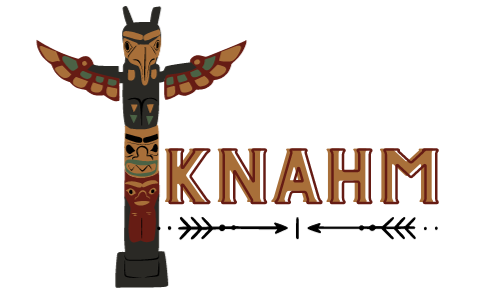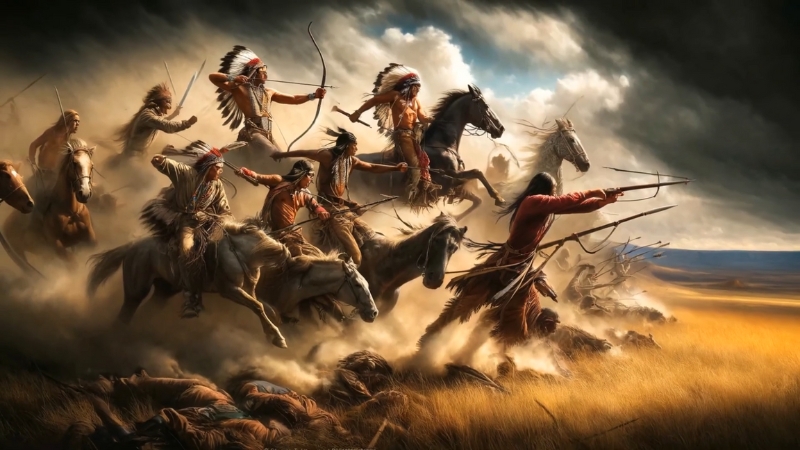The Cheyenne are one of the most storied and influential Indigenous peoples of the Great Plains. Known for their warrior societies, spiritual traditions, and decisive role in 19th-century U.S. history, the Cheyenne developed a distinct identity shaped by both woodland and Plains cultures.
From their origins in the Great Lakes region to their pivotal participation in battles such as the Sand Creek Massacre (1864) and the Battle of the Little Bighorn (1876), the Cheyenne people’s history reflects resilience in the face of upheaval.
Today, the Cheyenne Nation is divided into two federally recognized groups: the Northern Cheyenne Tribe of Montana and the Cheyenne and Arapaho Tribes of Oklahoma.
Origins and Early History
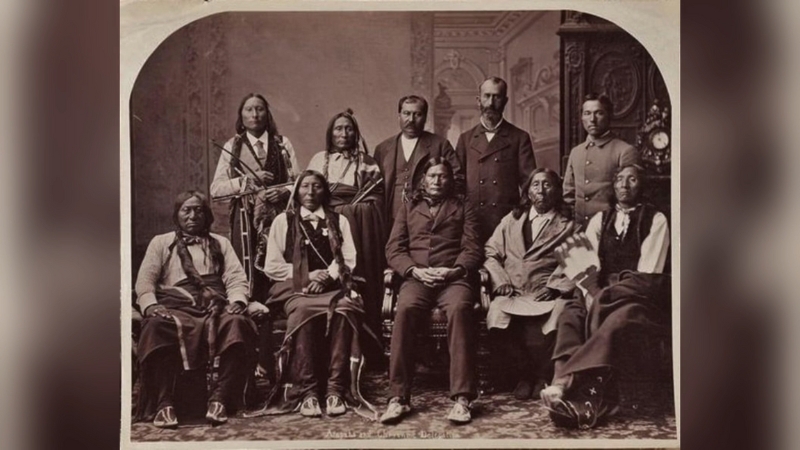
The Cheyenne were originally an Algonquian-speaking people who lived near the Great Lakes, particularly in areas of present-day Minnesota and North Dakota. Linguistic and archaeological evidence shows they were closely related to other Algonquian groups, such as the Cree and Ojibwe.
Their early lifestyle centered on farming, fishing, and hunting in the woodlands. Crops like corn, beans, and squash were grown alongside gathering wild rice.
This changed dramatically during the 17th and 18th centuries, when pressure from neighboring tribes, European colonization, and the fur trade pushed the Cheyenne westward onto the Plains.
Migration to the Plains
By the early 1700s, the Cheyenne had migrated to the Great Plains, where they adopted the horse and buffalo-based economy that would define their culture. The horse, introduced through trade and raiding from Spanish settlements, transformed Cheyenne society by making hunting, travel, and warfare far more efficient.
The Sioux underwent a similar shift during this period, as horses reshaped their mobility and military strength across the Plains.
This transition marked their rise as a Plains power. They abandoned farming villages for nomadic life in tipis, following buffalo herds that provided food, shelter, clothing, and tools.
By the mid-18th century, the Cheyenne controlled large territories stretching from the Black Hills to eastern Colorado.
Period
Location
Lifestyle Features
Pre-1700s
Great Lakes region
Woodland farming, fishing, and hunting
1700s
Migration westward
Adoption of horse culture, buffalo hunting
1800s
Plains dominance
Nomadic buffalo hunting, strong warrior societies
The Council of Forty-Four and Warrior Societies
Cheyenne’s political life blended council governance with warrior leadership.
The Council of Forty-Four
The highest governing body of the Cheyenne was the Council of Forty-Four, composed of forty-four chiefs chosen for their wisdom, generosity, and ability to resolve conflict.
Chiefs served ten-year terms and were expected to uphold peace, mediate disputes, and protect the tribe’s welfare.
Warrior Societies
Alongside the council, warrior societies held immense influence. These included:
- Bowstring Society
- Elk Horn Scrapers
- Fox Society
- Dog Soldiers
The Dog Soldiers became particularly famous. Originally one of the military societies, by the mid-19th century, they had evolved into a separate political and military force, often more militant than the Council of Chiefs.
The Dog Soldiers defended Cheyenne lands fiercely and played central roles in conflicts with U.S. forces.
Contact with Europeans and Americans
By the 1800s, the Cheyenne were deeply entangled in trade networks with Europeans and Americans. They traded buffalo hides and horses for guns, metal tools, and cloth. These exchanges brought wealth and power but also introduced disease, dependency, and conflict.
As U.S. expansion accelerated, Cheyenne territory became a contested frontier. Settlers moving along the Santa Fe Trail and Oregon Trail passed directly through their hunting grounds. The discovery of gold in Colorado (1858) intensified conflicts, as prospectors trespassed on Cheyenne lands guaranteed by treaty.
Wars and Massacres
View this post on Instagram
Sand Creek Massacre (1864)
Perhaps the darkest chapter in Cheyenne’s history occurred on November 29, 1864, when a peaceful Cheyenne village under Chief Black Kettle was attacked by Colorado militia at Sand Creek.
Despite flying a U.S. and white flag of truce, the camp was massacred – over 150 Cheyenne, mostly women and children, were killed. The brutality shocked the nation and fueled decades of resistance.
The Cheyenne in the Great Sioux War (1876–1877)
The Cheyenne allied with the Lakota Sioux and Arapaho against U.S. encroachment on the Black Hills.
At the Battle of the Little Bighorn (1876), Cheyenne warriors fought alongside Sitting Bull and Crazy Horse, contributing to the stunning defeat of George Armstrong Custer.
The Northern Cheyenne Exodus (1878–1879)
View this post on Instagram
After being forced to relocate to Indian Territory (Oklahoma), many Northern Cheyenne attempted to return to their homelands in Montana.
Led by Chief Little Wolf and Dull Knife, they faced relentless pursuit by U.S. troops. Though many perished, survivors succeeded in establishing a permanent Northern Cheyenne homeland.
Conflict
Year
Cheyenne Role
Outcome
Sand Creek Massacre
1864
Victims of a massacre
Heavy losses are a catalyst for resistance
Battle of the Little Bighorn
1876
Allied with the Lakota and the Arapaho
Defeated Custer’s 7th Cavalry
Northern Cheyenne Exodus
1878–79
Attempted to return north from Oklahoma
High casualties, eventual recognition of the Montana homeland
Reservation Era
By the late 19th century, U.S. military campaigns and policies had confined the Cheyenne to reservations. The Northern Cheyenne Reservation was established in Montana, while the Southern Cheyenne were placed with the Arapaho in Oklahoma.
Life on reservations was marked by poverty, disease, and attempts at forced assimilation:
- Allotment under the Dawes Act (1887) broke up communal lands.
- Boarding schools punished children for speaking Cheyenne and practicing traditions.
- Religious bans targeted ceremonies like the Sun Dance.
Despite these pressures, the Cheyenne maintained core aspects of identity through oral tradition, family networks, and covert practice of ceremonies.
Culture and Traditions
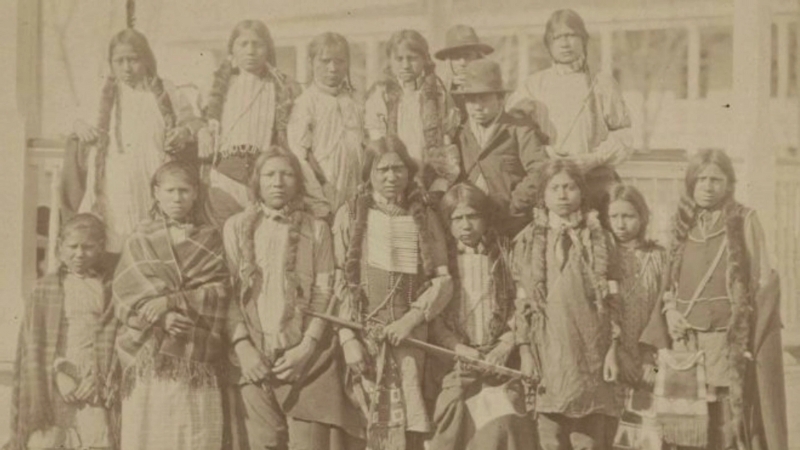
Language
The Cheyenne language is part of the Algonquian family, distinct from neighboring Plains tribes. Today, revitalization efforts include immersion programs, language apps, and university courses to preserve fluency.
Spirituality
Cheyenne religion emphasizes balance, respect for nature, and the sacredness of life. Central figures include Ma’heo’o (the Great Spirit). Important ceremonies include:
- The Sun Dance is a communal ritual of renewal and sacrifice.
- Vision Quests, where individuals seek guidance through fasting and solitude.
- Sacred Arrows and Sacred Buffalo Hat, spiritual objects central to Cheyenne identity and ceremony.
Daily Life
The Cheyenne followed the buffalo herds, living in tipis made of hides stretched over wooden poles. Social life revolved around extended family groups, with kinship determining responsibilities and support systems.
Arts and Material Culture
Cheyenne beadwork, quillwork, and painted hides are renowned for their precision and symbolism. Clothing, especially warrior shirts and women’s dresses, often displayed elaborate bead patterns representing personal or spiritual visions.
Aspect
Features
Housing
Portable tipis, decorated with painted designs
Clothing
Beadwork and quillwork, feathered headdresses, warrior shirts
Food
Buffalo meat, pemmican, berries, wild plants
Tools
Buffalo bone tools, bows and arrows, and later firearms
Ceremonial Objects
Sacred Arrows, Buffalo Hat
The Cheyenne in the 20th Century
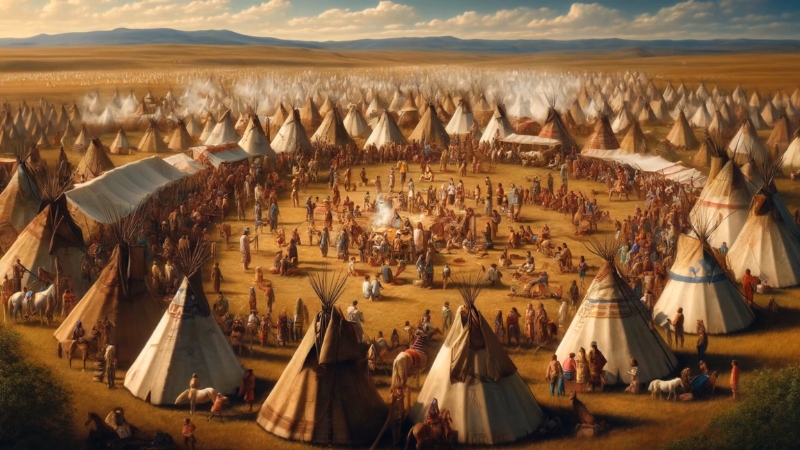
The 20th century brought both hardship and renewal. Cheyenne communities faced poverty and marginalization, but they also organized politically to strengthen sovereignty.
- Cultural Revitalization: Powwows, ceremonies, and oral traditions experienced revival despite government suppression.
- Legal Struggles: Cheyenne tribes pursued land claims and treaty rights through the courts.
- Military Service: Many Cheyenne men and women served in the U.S. armed forces during both World Wars and later conflicts.
By mid-century, tribal governments reasserted authority under the Indian Reorganization Act, creating formal governance structures for the Northern Cheyenne and the Southern Cheyenne and Arapaho Tribes.
The Cheyenne Today
Today, the Cheyenne are divided between two primary groups:
Tribe
Location
Population (2025 est.)
Notes
Northern Cheyenne Tribe
Lame Deer, Montana
~12,000 enrolled
Maintain strong cultural identity, Sun Dance, land, and language schools
Cheyenne and Arapaho Tribes
Concho, Oklahoma
~13,500 enrolled
Joint tribal government, economic development programs
Cheyenne communities face challenges, including unemployment, health disparities, and underfunded education. Yet, there are also signs of cultural resilience:
- Language revitalization programs in Montana and Oklahoma.
- Economic initiatives such as tribal enterprises, renewable energy projects, and cultural tourism.
- Youth engagement through powwows, storytelling, and traditional arts.
Contributions and Legacy
The Cheyenne have left a profound imprint on U.S. history and culture. Their role in resisting U.S. expansion shaped military history, while their warrior traditions and spiritual practices continue to inspire.
Leaders such as Black Kettle, Dull Knife, Little Wolf, and Morning Star are remembered for their courage and vision.
Contribution
Legacy
Military Resistance
Symbolized Indigenous resistance at Sand Creek and Little Bighorn
Spiritual Heritage
Sacred Arrows, Buffalo Hat, Sun Dance ceremonies
Cultural Arts
Beadwork, hide painting, storytelling traditions
Political Leadership
Ongoing assertion of sovereignty and treaty rights
Modern Advocacy
Standing Rock protests and alliances in environmental justice movements
Conclusion
@nativeamerican.history The history of the Cheyenne Tribe. Cheyenne Nation Cheyenne Indian Cheyenne Women Cheyenne Men Cheyenne Pride Cheyenne Land Cheyenne Territory Cheyenne Warrior Cheyenne Hunter Native American Native American History #cheyenne #cheyennetribe #cheyenneland #cheyennenation #cheyennepeople #cheyennewomen #nativeamerican #nativeamericantiktok #nativeamericanhistory #history ♬ original sound – NativeAmerican
The history and culture of the Cheyenne people reflect both tragedy and triumph. From their early woodland farming villages to their rise as horse-mounted warriors of the Plains, and from massacres and forced removals to today’s revitalization efforts, the Cheyenne have endured centuries of upheaval.
Yet their identity remains strong, carried in their language, ceremonies, and community life.
The Cheyenne story is not only part of Indigenous history but also of American history. It reminds us of the cost of expansion, the resilience of Native nations, and the importance of honoring sovereignty and cultural survival.
For those seeking to understand the Great Plains and the Indigenous legacy of North America, the Cheyenne remain an essential voice – rooted in tradition, shaped by struggle, and still vibrant in the 21st century.
